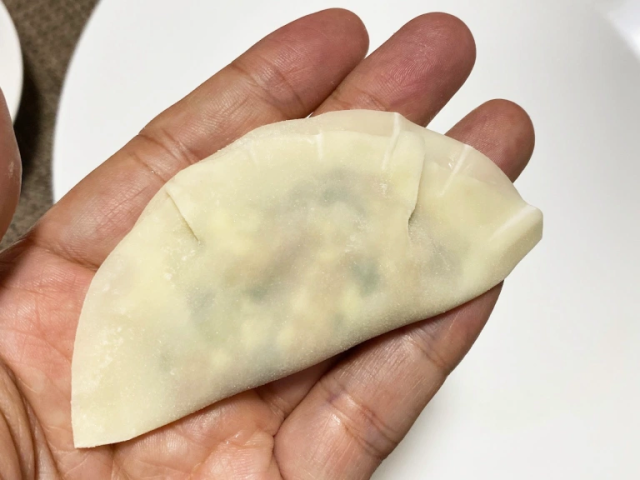
A cheap and easy way to make one of Japan’s favorite inexpensive comfort foods.
<CRUNCH> <CRUNCH> Oh, sorry, about that. We were just stuffing our faces with potato chips. We’ve been doing a lot of that these days, seeing as how we recently bought an awesome kitchen gadget for making chips at home in our microwave.
But our gastronomic desires are endless, and no sooner had we satisfied one comfort food craving than our stomachs began growling again. “Yeah, all these chips are nice and all, but what have you done for us lately?” they seemed to be asking. “Like, when was the last time you fed us some gyoza?”
Gyoza, the deep-fried dumplings also known to some people as pot stickers, are a staple of delicious inexpensive dining in Japan, where they’re offered at ramen joints, izakaya pubs, and Chinese restaurants. Packed with garlic and meat, they’re bite-sized bursts of flavor and protein, and while you can buy pre-made varieties as takeout orders to eat at home, they really taste best right out of the pan/off the grill.
Unfortunately, gyoza are a pretty big pain to make. Dicing up the ingredients isn’t too hard, and you can buy gyoza skin wrappers at the supermarket. Stuffing the skins and sealing them, though, requires a firm but delicate touch, and if you don’t do it just right the wrapper will come unraveled during cooking and spill the filling.
Luckily, we’ve found a solution to this problem, and, in keeping with our usual sensibilities, it’s one of the cheapest we could find. This One-Touch Gyoza Pack cost us just 130 yen (US$1.23), but you can find even more affordable models at 100 yen stores like Daiso.
▼ “It can be made with one touch of handling” vaguely boasts the package’s English text, but we’re here to make gyoza, not learn a language.
Once out of the package we learned that the One-Touch Gyoza Pack is sort of like a castanet in design, so of course we had to play with it for a couple minutes before getting started on any actual cooking.
The exact ingredients and ratio for gyoza fillings vary from chef to chef, but diced pork, garlic, cabbage, and leeks are pretty much always on the list of guests admitted to the party.
Once we had those prepared, all we had to do was place an empty gyoza wrapper into the One-Touch Gyoza Pack, spoon in some filling mix, and snap it closed.
So how did it turn out?
Perfect! In just seconds, the tool created crisply pleated folds, securely closed but without any sort of tearing or warping of the skin.
To further gauge the One-Touch Gyoza Pack’s effectiveness, we tried folding a gyoza by hand, and the results were far less aesthetically pleasing.
▼ Hand-folded gyoza (left) vs. One-Touch Gyoza Pack (right)
No longer seeing any point to wasting time hand-folding, we went back to using the One-Touch Gyoza Pack and in just a few minutes had more than two dozen gyoza ready for pan-frying.
So yes, the One-Touch Gyoza Pack does its job extremely well. However, it’s important to remember exactly what that job is: folding the gyoza. The actual cooking is up to you, so we had no one to blame but ourselves when we didn’t pay close enough attention and singed ours.
But at least it’ll be easy for us to fold more gyoza and try again.
Gyoza grill image: Pakutaso
All other images ©SoraNews24
● Want to hear about SoraNews24’s latest articles as soon as they’re published? Follow us on Facebook and Twitter!
[ Read in Japanese ]
Follow Casey on Twitter, where you can be sure he’s craving gyoza regardless of the day or time.

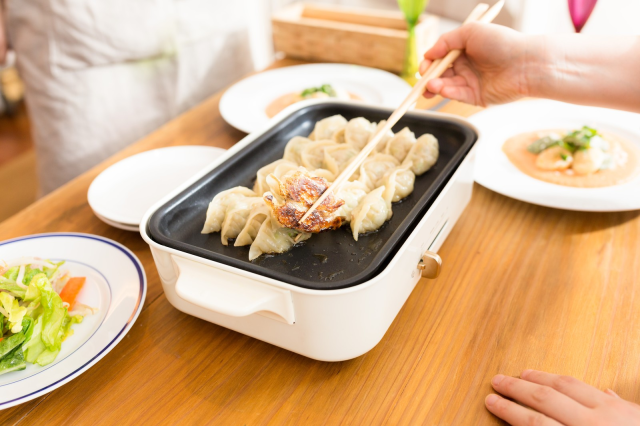
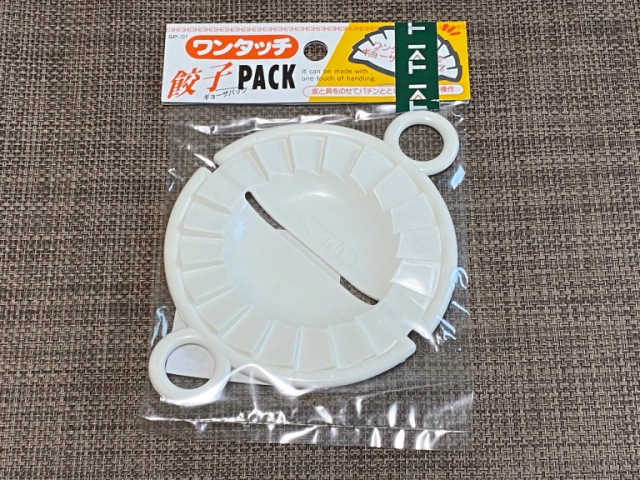
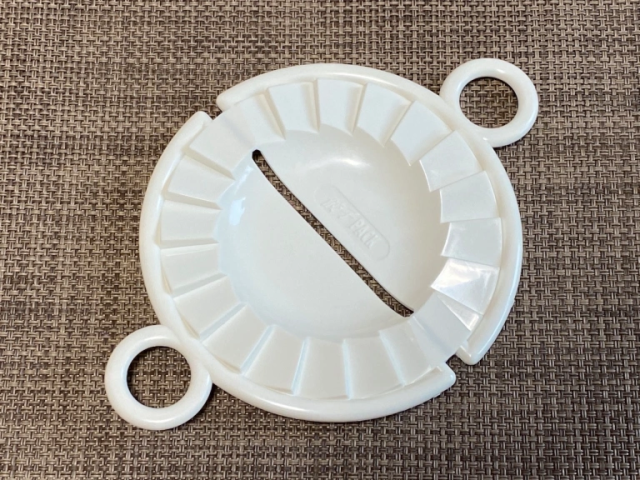
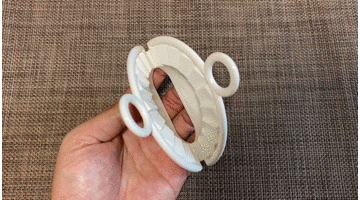
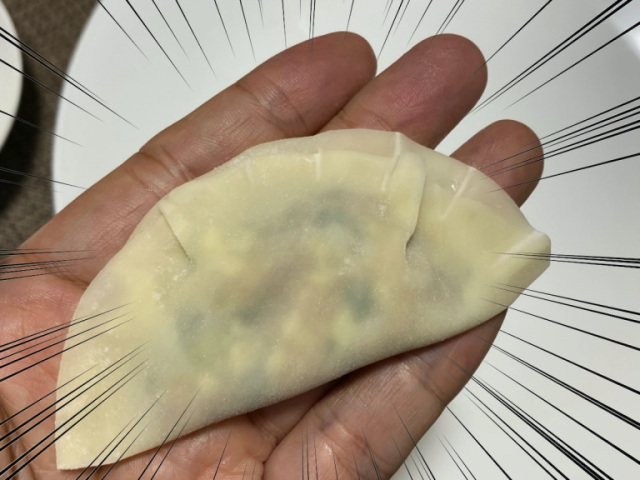
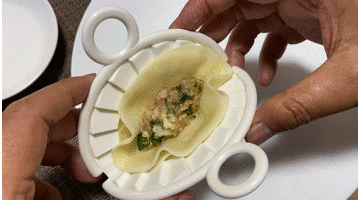
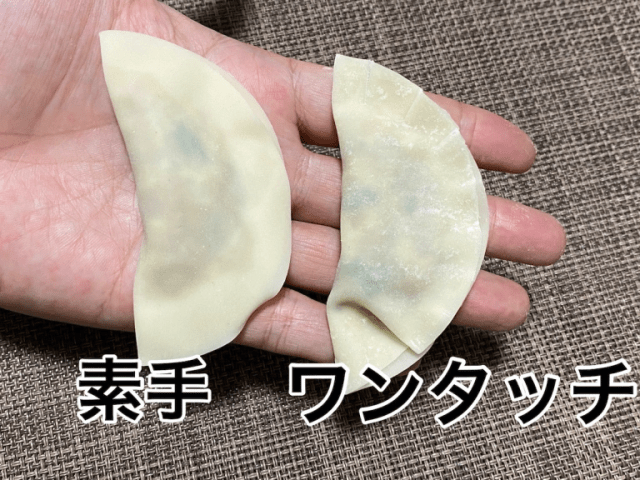

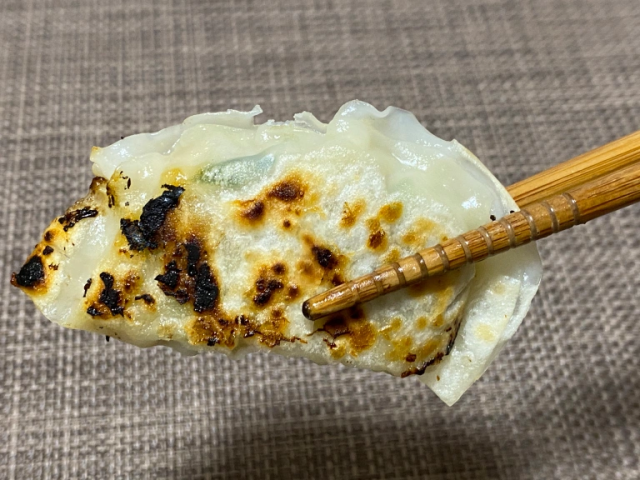
 100-yen gyoza gadget helps you make delicious dumplings in the blink of an eye
100-yen gyoza gadget helps you make delicious dumplings in the blink of an eye Michelin Guide gyoza in Tokyo: Worthy of the accolade?
Michelin Guide gyoza in Tokyo: Worthy of the accolade? Croissant gyoza: Pie-like dumplings take Japan by storm
Croissant gyoza: Pie-like dumplings take Japan by storm We tried to use our leftover gyoza wrappers to make marshmallow puffs…but it didn’t go to plan
We tried to use our leftover gyoza wrappers to make marshmallow puffs…but it didn’t go to plan Japan’s favorite gyoza restaurant changes its gyoza recipe – Will gyoza life ever be the same?
Japan’s favorite gyoza restaurant changes its gyoza recipe – Will gyoza life ever be the same? Starbucks Japan ready to get Year of the Horse started with adorable drinkware and plushies【Pics】
Starbucks Japan ready to get Year of the Horse started with adorable drinkware and plushies【Pics】 7 great places to see Mt. Fuji from without having to climb it
7 great places to see Mt. Fuji from without having to climb it Japanese thug wear from Birth Japan perfect for those breaking bad next year
Japanese thug wear from Birth Japan perfect for those breaking bad next year More Than a Capsule Stay: Why Solo Travelers Choose “global cabin Yokohama Chinatown”
More Than a Capsule Stay: Why Solo Travelers Choose “global cabin Yokohama Chinatown” Cyberpunk anime meets traditional culture in Ghost in the Shell gold leaf Japanese changing screens
Cyberpunk anime meets traditional culture in Ghost in the Shell gold leaf Japanese changing screens Uniqlo Ukiyo-e Blue T-shirts: A cool-hued reinterpretation of some of Japan’s greatest paintings
Uniqlo Ukiyo-e Blue T-shirts: A cool-hued reinterpretation of some of Japan’s greatest paintings Record number of foreign children in Japan need help understanding Japanese in school
Record number of foreign children in Japan need help understanding Japanese in school Sylvanian Families x Technics—we discover DJ turntable replicas are perfect for mini animal raves
Sylvanian Families x Technics—we discover DJ turntable replicas are perfect for mini animal raves We found possibly the quietest Japanese-style hotel in Tokyo’s bustling Shinjuku district
We found possibly the quietest Japanese-style hotel in Tokyo’s bustling Shinjuku district Japan’s bonenkai parties are the worst thing about the end of the year. Here’s how to fix them
Japan’s bonenkai parties are the worst thing about the end of the year. Here’s how to fix them Disillusionment at Tsukiji’s tourist-target prices led us to a great ramen restaurant in Tokyo
Disillusionment at Tsukiji’s tourist-target prices led us to a great ramen restaurant in Tokyo Japan may add Japanese language proficiency, lifestyle classes to permanent foreign resident requirements
Japan may add Japanese language proficiency, lifestyle classes to permanent foreign resident requirements Lacquerware supplier to emperor of Japan and Pokémon team up for new tableware
Lacquerware supplier to emperor of Japan and Pokémon team up for new tableware Starbucks Japan releases new zodiac chilled cup drink for 2026
Starbucks Japan releases new zodiac chilled cup drink for 2026 7-Eleven Japan’s ramen-cooking robot whipped us up a bowl of noodles【Taste test】
7-Eleven Japan’s ramen-cooking robot whipped us up a bowl of noodles【Taste test】 Hello Kitty Choco Egg figures are an adorable trip through three periods of Japanese pop culture【Pics】
Hello Kitty Choco Egg figures are an adorable trip through three periods of Japanese pop culture【Pics】 Japan’s otoshidama tradition of giving kids money at New Year’s gets a social welfare upgrade
Japan’s otoshidama tradition of giving kids money at New Year’s gets a social welfare upgrade Japan’s human washing machines will go on sale to general public, demos to be held in Tokyo
Japan’s human washing machines will go on sale to general public, demos to be held in Tokyo 7-Eleven Japan starts new temporary luggage storage service in over 300 branches
7-Eleven Japan starts new temporary luggage storage service in over 300 branches Starbucks teams up with 166-year-old Kyoto doll maker for Year of the Horse decorations【Photos】
Starbucks teams up with 166-year-old Kyoto doll maker for Year of the Horse decorations【Photos】 Tokyo considering law requiring more trash cans following litter increase in heavily touristed area
Tokyo considering law requiring more trash cans following litter increase in heavily touristed area Tokyo’s Tsukiji sushi neighborhood asks tour groups to stay away for the rest of the month
Tokyo’s Tsukiji sushi neighborhood asks tour groups to stay away for the rest of the month Nintendo’s Kirby now delivering orders at Kura Sushi restaurants, but not in Japan
Nintendo’s Kirby now delivering orders at Kura Sushi restaurants, but not in Japan Tokyo event lets you travel back in time, for free, to celebrate 100 years since Showa era start
Tokyo event lets you travel back in time, for free, to celebrate 100 years since Showa era start Sanrio theme park in Japan announces plans to expand into a Sanrio resort
Sanrio theme park in Japan announces plans to expand into a Sanrio resort Stamina-destroying “Paralysis Noodles” are Tokyo’s newest over-the-top ramen innovation
Stamina-destroying “Paralysis Noodles” are Tokyo’s newest over-the-top ramen innovation Survey asks foreign tourists what bothered them in Japan, more than half gave same answer
Survey asks foreign tourists what bothered them in Japan, more than half gave same answer Japan’s deadliest food claims more victims, but why do people keep eating it for New Year’s?
Japan’s deadliest food claims more victims, but why do people keep eating it for New Year’s? We deeply regret going into this tunnel on our walk in the mountains of Japan
We deeply regret going into this tunnel on our walk in the mountains of Japan Studio Ghibli releases Kodama forest spirits from Princess Mononoke to light up your home
Studio Ghibli releases Kodama forest spirits from Princess Mononoke to light up your home Major Japanese hotel chain says reservations via overseas booking sites may not be valid
Major Japanese hotel chain says reservations via overseas booking sites may not be valid Put sesame oil in your coffee? Japanese maker says it’s the best way to start your day【Taste test】
Put sesame oil in your coffee? Japanese maker says it’s the best way to start your day【Taste test】 No more using real katana for tourism activities, Japan’s National Police Agency says
No more using real katana for tourism activities, Japan’s National Police Agency says The top 10 annoying foreign tourist behaviors on trains, as chosen by Japanese people【Survey】
The top 10 annoying foreign tourist behaviors on trains, as chosen by Japanese people【Survey】 Starbucks Japan reveals new sakura drinkware collection, inspired by evening cherry blossoms
Starbucks Japan reveals new sakura drinkware collection, inspired by evening cherry blossoms Move over, garlic gyoza — it’s time to try squid ink, habanero, seaweed, and taco dumplings
Move over, garlic gyoza — it’s time to try squid ink, habanero, seaweed, and taco dumplings We made pan-fried and baked mini apple pies using gyoza dumpling wrappers【SoraKitchen】
We made pan-fried and baked mini apple pies using gyoza dumpling wrappers【SoraKitchen】 Japan now has “Gyoza for Athletes”, thanks to figure skating Olympian Yuzuru Hanyu 【Taste test】
Japan now has “Gyoza for Athletes”, thanks to figure skating Olympian Yuzuru Hanyu 【Taste test】 Three nations come together in friendship to share their dumpling wrapping skills
Three nations come together in friendship to share their dumpling wrapping skills New unstaffed gyoza store in Tokyo sells pot stickers 24 hours a day
New unstaffed gyoza store in Tokyo sells pot stickers 24 hours a day Dollhouse dumplings! Are these the world’s tiniest gyoza?【Video】
Dollhouse dumplings! Are these the world’s tiniest gyoza?【Video】 Who made the tastiest gyoza in 2021? We decide on our favourite pot stickers
Who made the tastiest gyoza in 2021? We decide on our favourite pot stickers Gyoza ramen! Two of Japan’s best comfort foods in one bowl at innovative restaurant【Taste test】
Gyoza ramen! Two of Japan’s best comfort foods in one bowl at innovative restaurant【Taste test】 Make fluffy Japanese omelettes in the microwave with this handy kitchen gadget
Make fluffy Japanese omelettes in the microwave with this handy kitchen gadget Gold leaf-covered giant gyoza dumpling now on sale to bring you a bit of luck!
Gold leaf-covered giant gyoza dumpling now on sale to bring you a bit of luck! Japan’s new “Immoral” gyoza will make your day and wreck your marriage【Taste test】
Japan’s new “Immoral” gyoza will make your day and wreck your marriage【Taste test】 Pioneering Japanese gyoza restaurant hasn’t changed its recipe in over 70 years, doesn’t need to
Pioneering Japanese gyoza restaurant hasn’t changed its recipe in over 70 years, doesn’t need to Convenience store Mini Stop’s new Gyoza Dog is must-try for all Gyoza fans! 【Taste test】
Convenience store Mini Stop’s new Gyoza Dog is must-try for all Gyoza fans! 【Taste test】 We try Ajinomoto’s new frozen gyoza, come up with a dangerously delicious way to eat them
We try Ajinomoto’s new frozen gyoza, come up with a dangerously delicious way to eat them Japan super budget dining – The best way to spend 1,000 yen at Ohsho, Japan’s favorite gyoza chain
Japan super budget dining – The best way to spend 1,000 yen at Ohsho, Japan’s favorite gyoza chain Japan’s new carriable one-person hot pot maker is our newest cooking gadget obsession
Japan’s new carriable one-person hot pot maker is our newest cooking gadget obsession
Leave a Reply